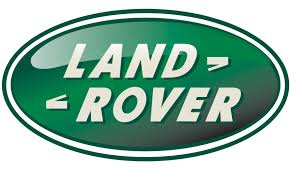TD5 Defender

33
CLUTCH
6
DESCRIPTION AND OPERATION
DESCRIPTION
General
The clutch system is a diaphragm type clutch operated by a hydraulic cylinder. The drive plate is of the rigid centre
type with no integral damping springs. The flywheel is of the dual mass type with damping springs integral with the
flywheel. The clutch requires no adjustment to compensate for wear.
Hydraulic Clutch
The hydraulic clutch comprises a master cylinder, slave cylinder and a hydraulic reservoir. The master and slave
cylinders are connected to each other hydraulically by plastic and metal pipes. The plastic section of the pipe
allows ease of pipe routing and also absorbs engine movements and vibrations.
The master cylinder comprises a body with a central bore. Two ports in the body connect the bore to the hydraulic
feed pipe to the slave cylinder and the fluid reservoir. The bore is also connected to a damper which prevents
engine pulses being transferred hydraulically to the clutch pedal. A piston is fitted in the bore and has an external
rod which is attached to the clutch pedal with a pin. Two coil springs on the clutch pedal reduce the effort required
to depress the pedal.
The master cylinder is mounted on the bulkhead and secured with two bolts. The cylinder is connected to the
shared brake/clutch reservoir on the brake servo by a braided connecting hose.
The slave cylinder is located on the left hand side of the gearbox housing and secured with two bolts. A heat
shield is fitted to protect the underside of the slave cylinder from heat generated from the exhaust system. The
slave cylinder comprises a cylinder with a piston and a rod. A port in the cylinder body provides the attachment for
the hydraulic feed pipe from the master cylinder. A second port is fitted witha bleed nipple used for removing air
from the hydraulic system after servicing. The piston rod locates on a clutch release lever located in the gearbox
housing. The rod is positively retained on the release lever with a clip.
Clutch Mechanism
The clutch mechanism comprises a flywheel, drive plate, pressure plate, release lever and a release bearing. The
clutch mechanism is fully enclosed at the rear of the engine by the gearbox housing.
A clutch release bearing sleeve is attached in the gearbox housing with two bolts and located on two dowels. A
spigot with a ball end is formed on the release bearing sleeve and provides a mounting and pivot point for the
clutch release lever. A dished pivot washer is located on the ball of the spigot. When the release lever is located
on the ball, the pivot washer seats against the rear face of the release lever. A spring clip is located on the lever
and the pivot washer and secures the lever on the spigot. A small bolt retains the spring clip in position.
The release lever is forked at its inner end and locates on the clutch release bearing carrier. The outer end of the
release lever has a nylon seat which locates the slave cylinder piston rod. A second nylon seat, positioned
centrally on the release lever, locates on the ball spigot of the release bearing sleeve and allows the release lever
to pivot freely around the ball.
The clutch release bearing locates on the clutch release lever and release bearing sleeve. The bearing is retained
on a carrier which has two flats to prevent the carrier rotating on the release lever. A clip retains the release lever
on the carrier. The bearing and carrier are not serviceable individually.
